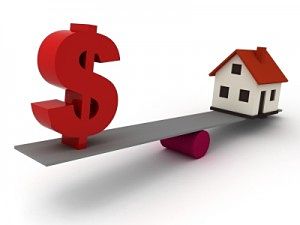Home-price appreciation is slowing, a welcome trend for potential buyers but a troubling one for homeowners still looking for relief from underwater mortgages.
Single-family housing prices rose 4.4% in the year that ended in the second quarter, the slowest annual pace since 2012, according to a report released Tuesday by National Association of Realtors.
The association found that median prices for existing single-family homes grew year-over-year in 122 of 173 metropolitan areas it tracked, while prices declined in 47 metro areas. Only 19 areas showed double-digit year-over-year price increases, a substantial drop from the 37 cities that showed such increases in the first quarter.
Economists said price appreciation is slowing in part because buyers, including investors, have become more cautious and are pulling back from the market amid the big price gains of the past year. At the same time, those higher prices persuaded more homeowners to put their homes up for sale, adding inventory and reducing the urgency to buy.
Those trends are good news for potential buyers, who have had to deal with heated competition for a relatively small number of homes on the market in many cities as well as a near percentage-point increase in 30-year mortgage rates since May 2013.
However, the trends serve as a warning to some owners who bought their homes near the peak of the market and still owe more on their mortgages than their homes are worth, said NAR chief economist Lawrence Yun. A report from real-estate research firm CoreLogic CLGX -0.44% said that at the end of the first quarter, owners of 6.3 million homes were still underwater, or owed more than their homes were worth.
“With this price deceleration, it could be another three to five years for some people to go above water,” Mr. Yun said.
Stan Humphries, chief economist of real-estate-information site Zillow Inc., Z +0.38% said that home values in many markets are likely to oscillate over the next few years, as the market tries to find stable ground after years of boom, bust and recovery.
“We’re definitely at an inflection point. We see moderation [in price gains] continuing,” he said, based on Zillow’s own data on home values.
Overall, Mr. Yun said that the second quarter showed a significant divergence in price change between metro areas and regions. While the median existing single-family home price between the second quarters of 2013 and 2014 rose 7.3% in the West to $297,400, home prices in the Northeast fell 0.9% to $255,500, the report said.
Some of the most strongly rebounding housing markets, such as Phoenix and Las Vegas, are also showing signs of cooling, Mr. Yun said. The Phoenix area, which had been experiencing double-digit year-over-year price growth, saw prices rise 8.3% in the second quarter from the previous year to $198,600, the report said.
The NAR report said that prices dropped the most sharply in Elmira, N.Y. with a near 30% decline between the second quarters of 2013 and 2014 to $87,800.
To be sure, median home prices can be skewed as the kinds of homes being sold shift between the higher and lower ends of the market, a factor that can have an especially strong influence on statistics from small metropolitan areas.
Cathy Weil, president-elect of the Elmira-Corning Regional Association of Realtors, said that the Elmira median home price was skewed by the mix of homes sold in the second quarter. She said that her area has seen sales pick up significantly and some high-price homes have been receiving multiple offers.
According to the NAR report, the most expensive housing markets in the second quarter were San Jose, Calif., where the median price was $899,500; San Francisco, $769,600; Anaheim-Santa Ana, Calif., $691,900; Honolulu, $678,500; and San Diego, $504,200.
Some home buyers say that they’ve noticed the market cool somewhat. Trey Denton, a 31-year-old metals broker in Newburgh, Ind., bought an investment property for about $175,000 at the end of June, which he plans to list for sale this Friday. He said that he hopes to sell the home before the winter and that he feels there is an increased sense of urgency to sell so he won’t have to wait until the spring home-buying season.
“There’s definitely a risk with waiting,” Mr. Denton said. “With interest rates looking to creep up next year, the market could fall.”
Real-estate agent Kevin Eastridge, who is president of the Indiana Association of Realtors, said that his housing market around Evansville, Ind., “stopped dead” between November and February, and was “excellent” between March and May. In June, activity dropped off a bit, but things heated up again in July, he said.
“We are running into some multiple-offer situations but those are the exception rather than the rule,” he said.

